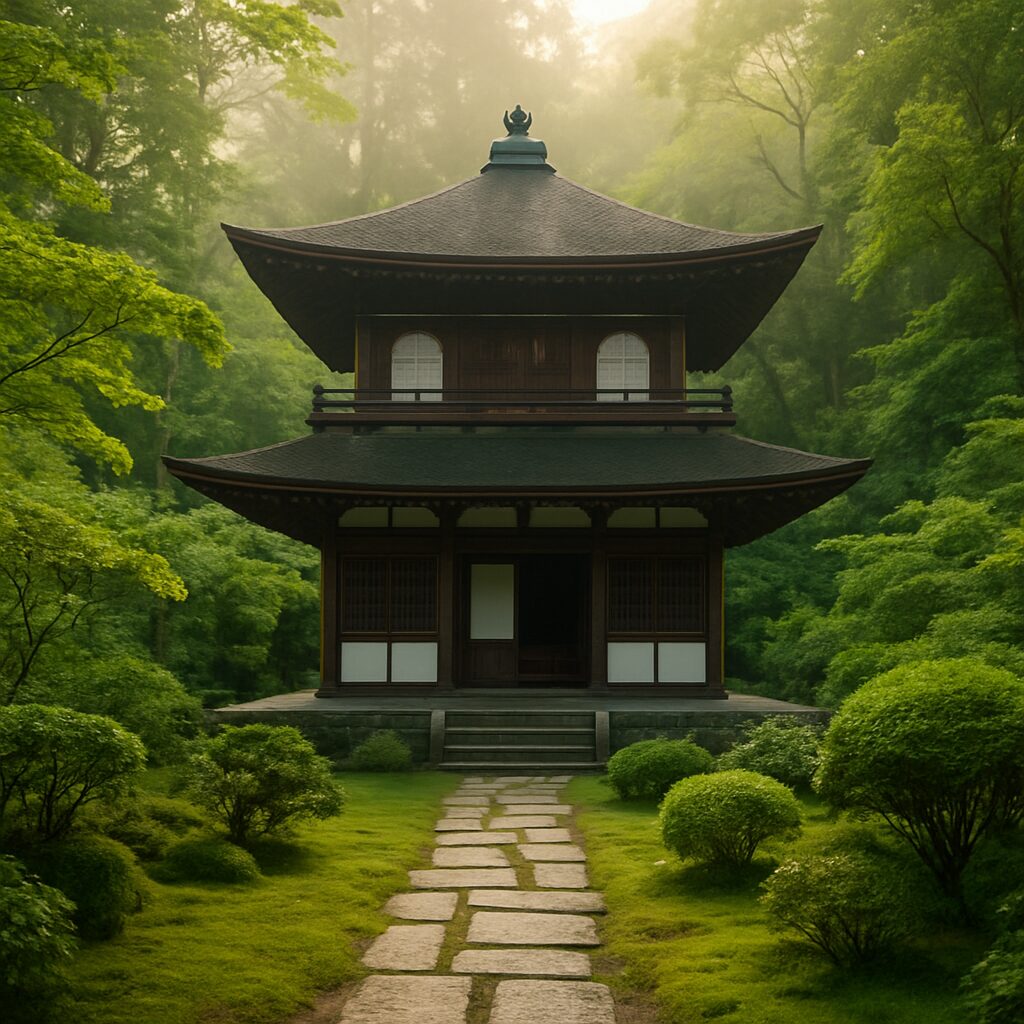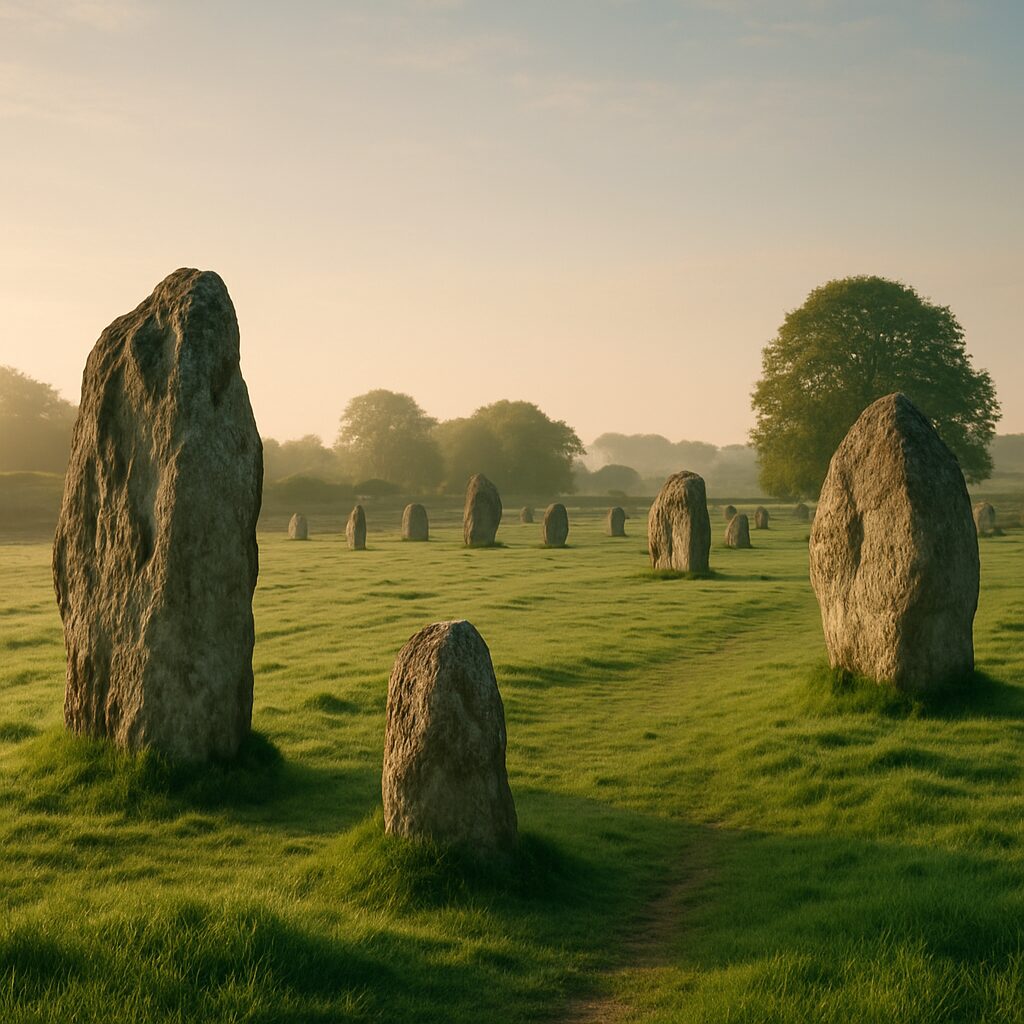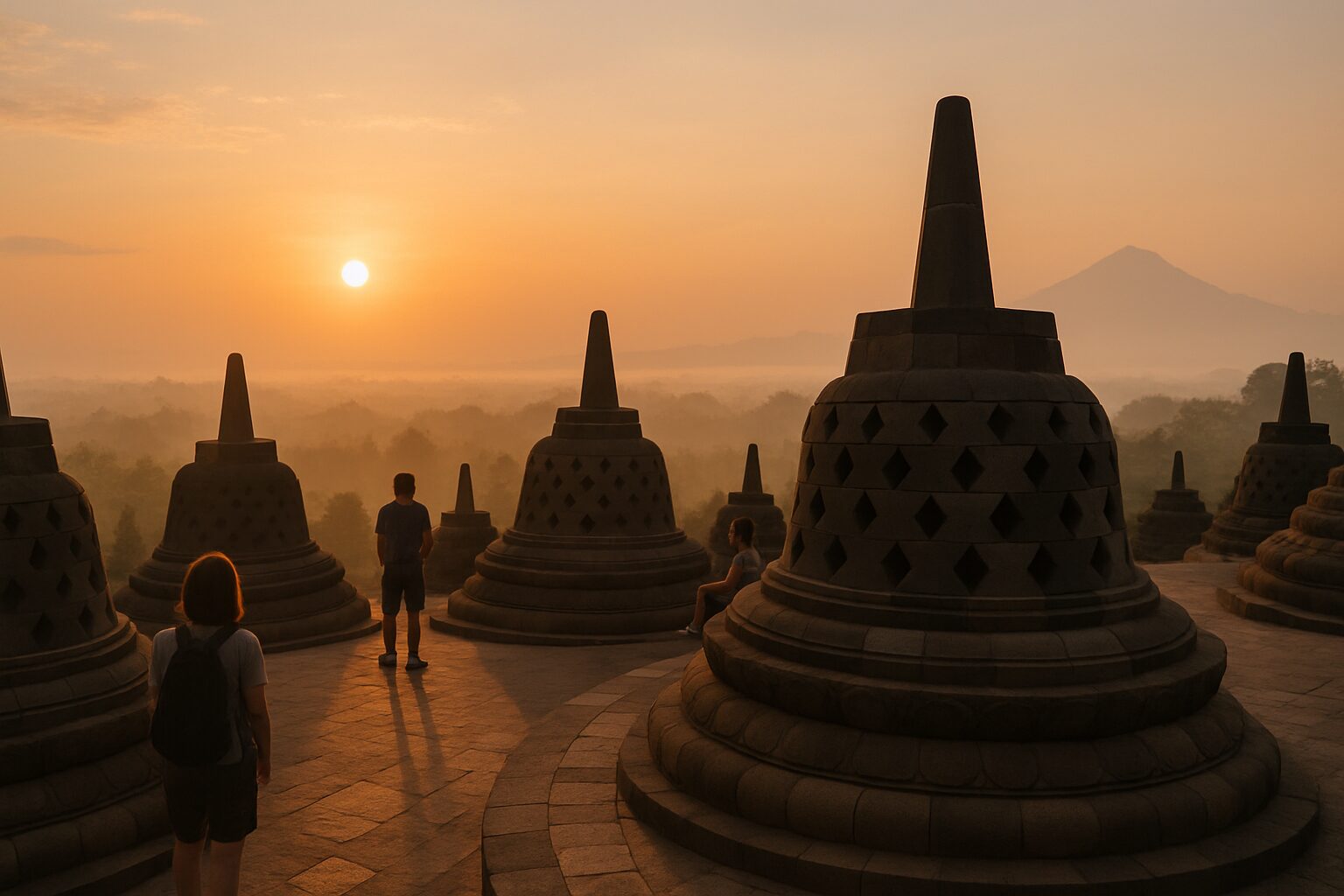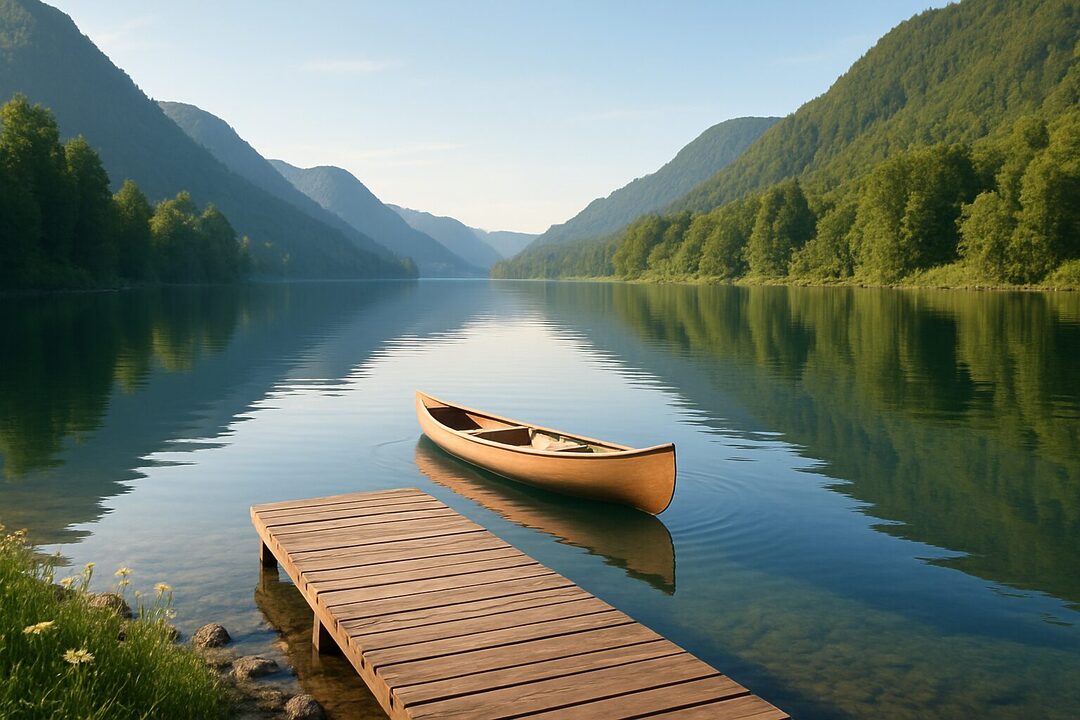Every year, millions are drawn to the world’s most famous destinations, enchanted by their history, culture, and charm. Yet, alongside this allure often comes the challenge of navigating through throngs of fellow travelers, eager to witness the same wonders. In 2025, with global connectivity at its peak, the surge in tourism to iconic places like Kyoto, Varanasi, and Assisi has made the quest for a quiet moment increasingly difficult. But serenity isn’t necessarily reserved for remote corners of the world. Even in bustling locales, it’s possible to craft an oasis of calm, allowing for meaningful connections with the surroundings and oneself. Unlocking these “Serenity Retreats” within crowded settings can transform ordinary vacations into profound journeys of peace, reflection, and rejuvenation. From mindful practices to strategic timing, the path to tranquility is layered with opportunity, waiting for those ready to embrace the harmony amid the hustle.
Unlocking Calm Oasis: Mindful Approaches to Serenity in Crowded Destinations
Navigating crowded tourist hotspots without losing one’s peace of mind demands conscious strategies. The essence of turning a noisy site into a calm oasis lies first in adopting a mindful mindset. Travelers who embrace awareness of their senses and surroundings can transcend the chaos, engaging in what can be called a “Quiet Quest” even amidst crowds.
For instance, in realms such as Kyoto, Japan, once known as the “Capital of Peace and Tranquility,” the presence of nearly 2,100 religious sites—including Buddhist temples and Shinto shrines—offers countless pockets of solitude. Visitors can discover serene spaces within temple gardens or traditional tea houses, allowing moments of zen adventures that contrast the metropolitan bustle. Such mindful exploration transforms sightseeing into a spiritual experience, encouraging awareness and reflection.
Similarly, Varanasi in India, despite its vibrant crowds and rich cultural tapestry, offers meditative opportunities along the banks of the sacred Ganges River. Early morning rituals where locals bathe and pray set a tone of peaceful getaways for those who observe respectfully and with patience. Here, stillness seekers can find solace within the rhythmic chants and the soft lapping of water, creating a harmonic journey amid the city’s energy.
Practical steps to foster serenity retreats in crowded destinations include:
- Arriving during off-peak hours: Most crowds surge during midday; early mornings or late afternoons provide calmer conditions.
- Engaging with local spiritual or wellness activities: Yoga sessions, meditation classes, or cultural ceremonies offer intimate engagement.
- Choosing lesser-known landmarks: Popular destinations often have hidden corners or gardens less frequented by tourists.
- Practicing deep breathing and presence techniques: Simple mindfulness breathwork can center the mind even in bustling settings.
- Using noise-cancelling headphones or calming soundtracks: Personal soundscapes help block external distractions.
Travellers equipped with such mindful escapes not only enrich their individual experience but also contribute gently to the pace and tone of tou rism. This reciprocal respect nurtures sustainable serenity trips, fostering environments where harmonious journeys become the norm rather than the exception.

Integrating Wellness Travel Serenity Trips into Itinerary Planning
Strategic itinerary adjustments can elevate the quality of any visit to crowded destinations. For example, incorporating time for tranquility-focused activities like wellness retreats or serene travel spaces aids in balancing busy days filled with exploration.
Sites such as Assisi in Italy perfectly marry the spiritual with the cultural, offering retreats around holy springs where visitors meditate and participate in interfaith gatherings. Adding these moments not only enhances relaxation but deepens cultural understanding, turning travel into a mindful escape.
More tips include:
- Splitting sightseeing with rest periods in serene cafés or parks.
- Booking accommodations near natural or spiritual sanctuaries.
- Prioritizing experiences over destinations—focusing on peaceful encounters rather than ticking boxes.
- Engaging with local guides skilled in mindful journey facilitation.
- Opting for walking or biking tours to slow the pace and increase connection with the environment.
The integration of wellness travel into crowded destination plans supports not only personal calm but encourages the tourism industry to embrace sustainable serenity trips. Travelers can find guidance on designing such meaningful itineraries at Serenity Trip Planning.
Discovering Serene Spaces: Hidden Gems in Popular Tourist Destinations
Often overlooked are the quiet sanctuaries nestled within the hustle of globally renowned tourist spots. These serene spaces serve as sanctuaries for stillness seekers who seek refuge from commonplace crowds. Exploring these hidden corners unlocks unique serenity retreats capable of recharging travelers’ spirits without the need for remote displacement.
Take, for example, the Holy Isle of Arran, Scotland—a tranquil Buddhist retreat renowned for its spiritual heritage since the 6th century. Despite its accessibility, the island offers peaceful escape areas including native-tree plantings and bird sanctuaries. Visitors engaging in mindful escapes here find themselves enveloped in an atmosphere ideal for reflection and renewal.
Or consider Avebury in Wiltshire, UK, home to the largest stone circle in the world, predating even Stonehenge. While tourists flock to the famous megalithic sites, walking along the vast permissive paths allows one to slow down and immerse in the landscape’s mystique. The expansive nature of this World Heritage Site encourages a harmonious journey into Britain’s ancient natural rhythms.
Here is a list of seeker-approved hidden tranquil travel spots found within popular destinations:
- Cape Reinga, New Zealand: Known as the “leaping place of the spirits,” it exudes a blend of cultural mythology and breathtaking nature.
- Crater Lake, Oregon, USA: Surrounded by steep cliffs, this deep blue lake provides sublime calm for nature lovers.
- Sabi Sands Game Reserve, South Africa: Combines luxury safari with a serene connection to the wild, perfect for peaceful getaways.
- Mount Shasta, California, USA: An active volcano considered sacred by Native Americans, attracting spiritual retreats seeking energy and healing.
- Córdoba, Spain: With its La Mezquita mosque-cathedral complex, it symbolizes peaceful religious coexistence, a source of inner calm for visitors.
Uncovering these gems encourages travelers to diversify their experiences beyond mainstream spots. For more curated serene travel places in 2025, resources like Serene Travel Places in 2025 offer valuable guidance.

Embracing Mindful Escapes Within Urban Crowds
The challenge of serenity in city destinations can be pleasantly overcome by committing to mindful living practices onsite. The essence of “Stillness Seekers” is finding peace amidst the noise through intentional habits. Here are actionable ideas:
- Attending local meditation or yoga sessions in parks or studios.
- Planning quiet visits to museums during less busy hours.
- Seeking out rooftop gardens or quiet corners in bustling neighborhoods.
- Utilizing mindfulness apps to stay anchored in calm during sightseeing.
- Practicing gratitude journaling to heighten awareness and reduce stress.
Such methods contribute to deepening traveler wellbeing and advancing sustainable serenity trips by respecting both self and environment. For inspiration and tools, Finding Good Living’s guide on serenity offers extensive advice for integrating calm rituals into any itinerary.
Zen Adventures: Using Timing and Technique to Beat the Crowds
Even the most popular tourist attractions can become zones of tranquility when visits are timed and planned strategically. Tourists with an eye on harmonious journeys can transform busy venues into personal peaceful getaways. Having insight into visitor patterns and local rhythms enables one to identify prime windows of quietness.
For example, Reality Pathing suggests early mornings and late afternoons as ideal for experiencing serenity in major destinations. This allows visitors to enjoy sacred sites like Buddhist temples in Kyoto or nature parks without the push and pull of large crowds.
Simple, yet effective tactics include:
- Booking tickets in advance to skip long queues and reduce waiting stress.
- Visiting during shoulder seasons (April-May or September-October) when foot traffic diminishes.
- Choosing midweek days over weekends for popular locations.
- Utilizing audio tours to engage more deeply and reduce reliance on guides that may stick to groups.
- Exploring alternative entrances or pathways often missed by mass tourism.
Coupling these techniques with mindful presence yields an enriched travel experience that feeds the soul rather than depletes it. Visitors keen on tranquil travels will find these approaches essential to curating their own calm oasis within busy spaces.

Planning Zen Adventures with Sustainable Serenity Trips
Planning a trip that seeks serenity in popular destinations requires embracing sustainable serenity trips principles. Conscious choices protect the environments that offer these precious experiences. Considerations include selecting eco-friendly accommodations, limiting single-use plastics, and supporting local businesses committed to low-impact tourism.
Moreover, knowledge of local customs and cultural sensitivities fosters respectful interactions, deepening one’s travel journey into a meaningful event rather than a mere sightseeing excursion. Engaging with community-led tours or Serenity Retreats further roots travel experiences in connection and harmony.
Resources like The Seek Blog’s guide and Traveler Dreams’ articles offer actionable insights to help travelers align their adventures with preservation and peace.
Tranquil Travels: Exploring Remote Serenity Retreats Beyond the Crowds
While finding calm within busy destinations is enriching, sometimes serenity calls for venturing into silence-rich remote locations. These quiet travel destinations enable a deeper dissociation from everyday pressures and chaos, yielding profound rejuvenation.
Destinations like Lapland, Finland stand out as silent sanctuaries where travelers can witness the ethereal northern lights in vast snowy landscapes. Activities like husky sledding blend adventure with introspection, enhancing the mindful escape. Similarly, the rugged Faroe Islands and Bhutan’s Himalayan valleys provide spiritual retreats and untouched beauty for stillness seekers.
Remote places offer a series of benefits:
- Minimal human interference supports natural rhythms.
- Wide-open spaces encourage mental clarity and emotional release.
- Unique ecosystems foster environmental respect and wonder.
- Opportunities for deep disconnect from technology and social media amplify presence.
- Availability of specialized retreats focusing on yoga, meditation, and healing.
Those exploring these serene landscapes often report transformational impacts on their mental health and balanced life perspectives. For a detailed overview on embarking on such mindful escapes, one can visit Solo Serenity & Self-Discovery.
Embracing tranquil travels beyond urban settings expands the horizon and enriches the soul with experiences unattainable in crowded hubs. Whether it’s meditating by a glacier lake in Patagonia or walking silent monastery paths in Bhutan, such journeys are an invitation to reconnect with the essence of serenity itself.

As a 34-year-old Yoga Teacher, I am passionate about guiding others on their journey to mindfulness and well-being. With years of experience in various yoga styles, I create a welcoming environment that encourages personal growth and self-discovery. Join me in exploring the transformative power of yoga.


